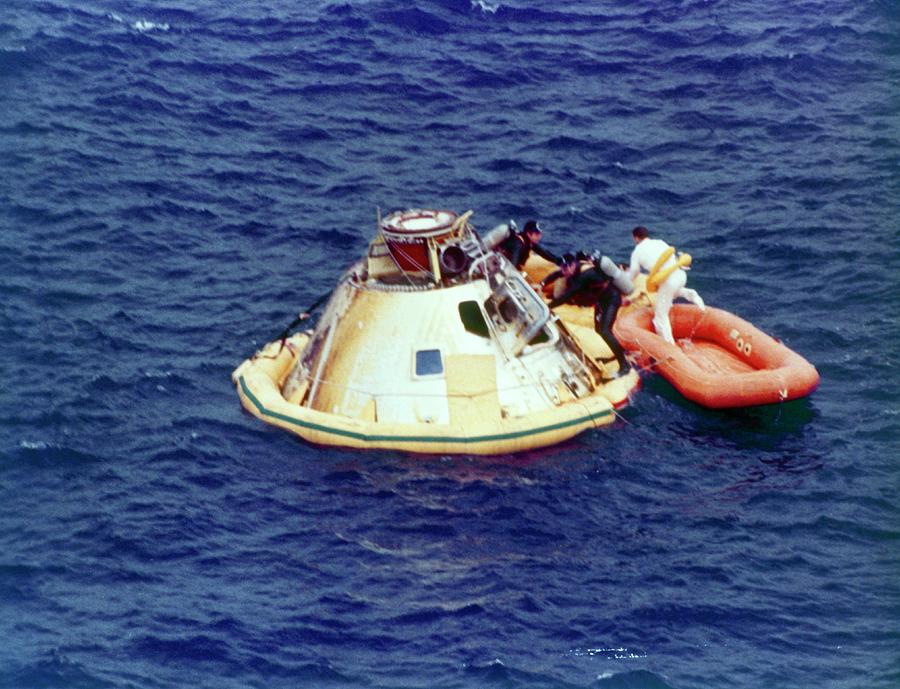This is the sixth in a series of posts in celebration of the fiftieth anniversary of Apollo 11 and man’s first landing on the Moon. In this post I will discuss the design and development of the Saturn V launch vehicle, still the largest and most powerful rocket ever built. I will also talk about the Apollo 8 mission, the first manned mission to launch on the Saturn V and the first time astronauts left Earth orbit and traveled to another heavenly body, orbiting the Moon ten times before returning safely our planet.

If anyone was going to get to the Moon by President Kennedy’s deadline they were going to need a big rocket, much bigger than anything that had ever been built before. Fortunately for NASA Werner von Braun, the German rocket expert that they had rescued at the end of World War II, had been thinking about a manned mission to the Moon since before Hitler’s rise to power. The image below shows von Braun with his circa 1955 concept of a Moon Rocket from a “Tommorowland” episode of “The Wonderful World of Disney”.

In late 1962 NASA settled that the mission profile for their Lunar program would be Lunar Orbit Rendezvous (LOR) wherein two spacecraft would enter lunar orbit, a mothership along with a smaller landing module that would carry two men to the Moon’s surface. Once the lander had returned the astronauts to lunar orbit it would dock with the mothership which would then bring the entire crew back to Earth.
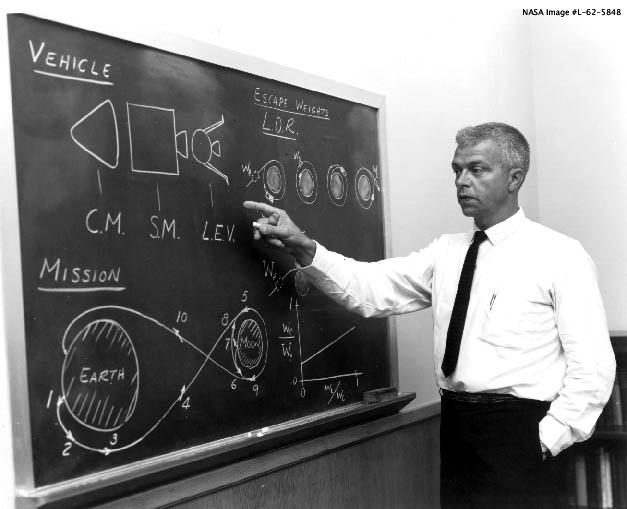
With that profile settled von Braun could begin the design of the massive rocket that would be needed. Originally designated as the C-5 the Saturn V would dwarf all previous rockets consisting of three stages and standing more than 110m tall with the Apollo spacecraft on top.
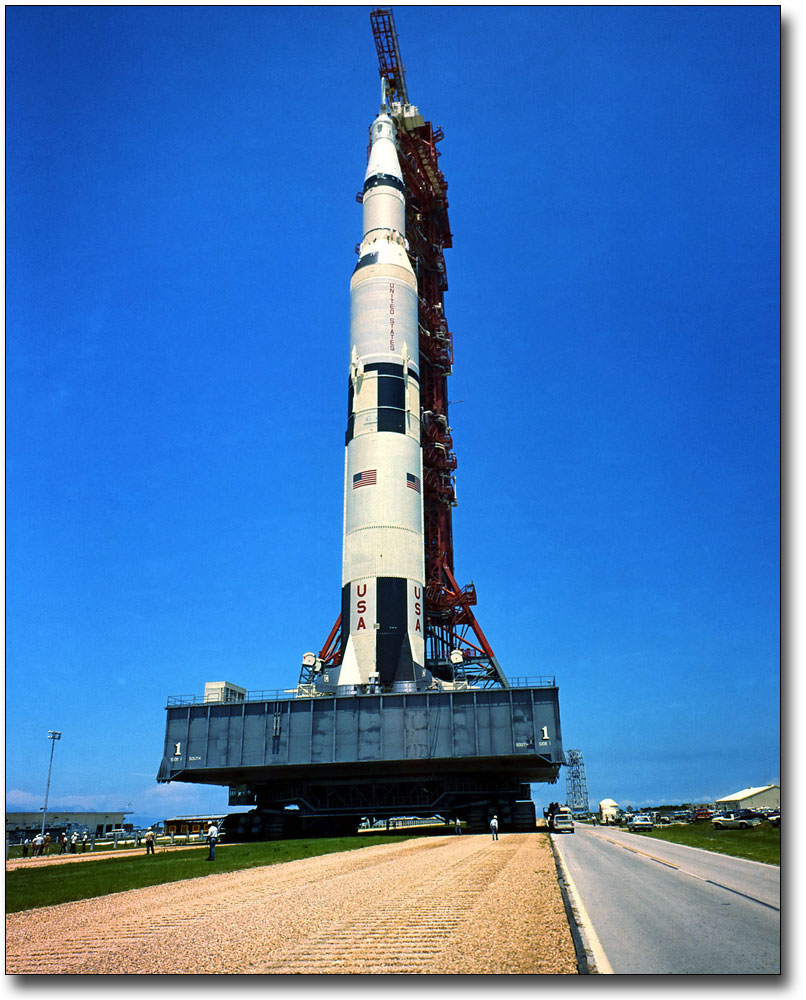
Everything about the Saturn V was enormous; the thrust provided by its first stage was 33 million Newtons provided by five F-1 rocket engines for a total time of 168 seconds. The second stage’s thrust was lower at only 5 million Newtons but it burned for more than twice as long at 384 seconds.

The third S-IVB stage would fire twice, firing for a short time to nudge Apollo into Earth orbit while it’s second firing would propel the Apollo Command, Service and Lunar Modules to the Moon. In total the Saturn V was capable of lifting 140,000 kg into Low Earth Orbit (LOE) or 48,600 kg to an Earth Escape trajectory.
In late 1968 the Apollo Command and Service Modules (CSM) had already accomplished their first test mission in Earth orbit during the Apollo 7 mission and the Saturn V had completed its first unmanned launch on November 9th 1967. NASA’s schedule now called for a mission to test the Lunar Module (LM) in Earth orbit but the LM was behind schedule; it wouldn’t be ready until early in 1969. With only a year to go to meet Kennedy’s deadline the space agency had to make some progress.
It was NASA’s Apollo spacecraft manager George Low who suggested that Apollo 8 be assigned the mission of humanity’s first trip around the Moon. Such a mission Low argued, would provide a complete checkout of the full capabilities of the Apollo spacecraft and the Saturn V while at the same time testing NASA’s ability to track and communicate with Apollo all the way to the Moon and back. The fact that the CIA had information that the Soviets were preparing for just such a mission played no small role in the decision.
So it was that on December 21st of 1968 the Apollo 8 mission was launched from Cape Kennedy space center with a crew of Frank Borman, Jim Lovell and Bill Anders. The Saturn V rocket performed flawlessly placing the CSM, along with the S-IVB third stage into LOE. This combination of modules represented the first time that a manned spacecraft had been placed into space which was capable of leaving Earth’s gravitational field and journeying into deep space.

After spending two orbits checking out their spacecraft the Apollo 8 crew was given the command from mission control “Apollo 8, you are go for TLI” where TLI stood for Trans Lunar Insertion. The engine of the S-IVB stage was reignited and the crew of Apollo 8 became the first human beings to reach Earth escape velocity, they were on their way to the Moon.
During the sixty-eight hour journey to the Moon the CSM detached from the S-IVB stage, turned 180º about and ‘practiced’ removing a LM from its storage position place in the S-IVB. On the 24th of December, Christmas Eve, the spacecraft passed behind the Moon and the Apollo 8 crew became the first human beings to see the far side of the Moon with their own eyes.
Firing the Service Module engine while speeding over farside the Apollo spacecraft entered Lunar orbit, completing ten orbits in about twenty hours. With the Moon between them and Earth the Apollo 8 crew were completely out of radio contact, further from Earth than any human beings had ever been. As the CSM came out from behind the Moon the crew became the first humans to ever witness an Earthrise, see image below.
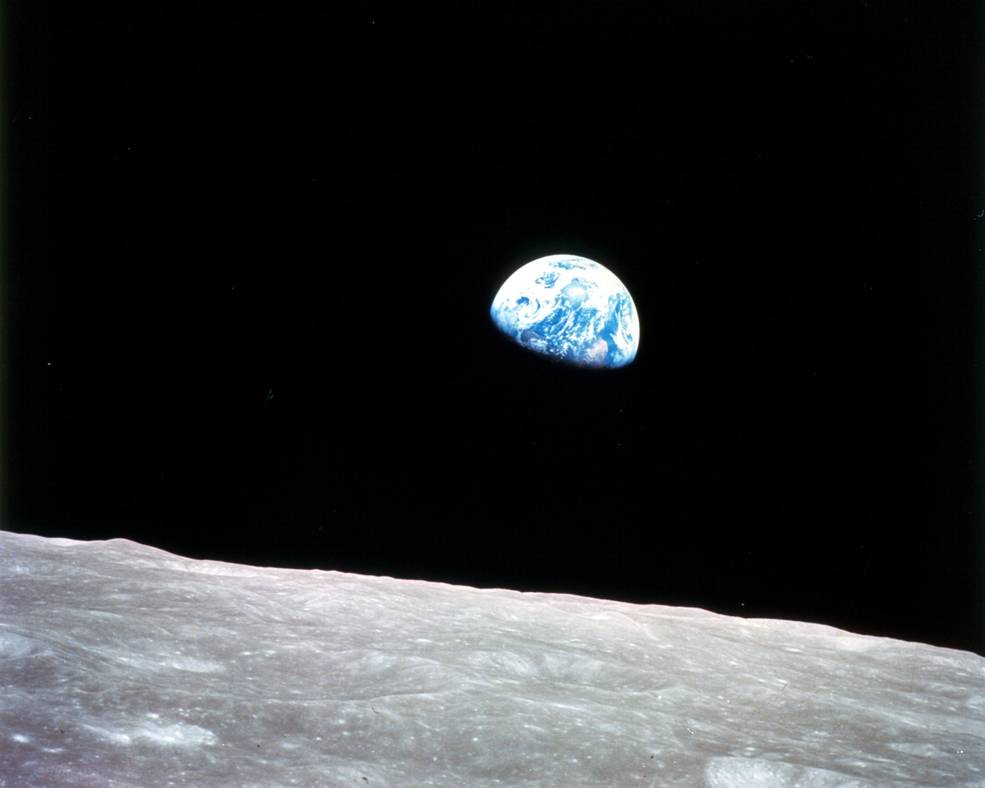
It was while orbiting the Moon on Christmas Eve that the Apollo 8 crew sent back to Earth a live television transmission that famously included a reading by the crew of the first chapter of the book of Genesis as translated in the King James Bible.
The riskiest stages of the mission were still to come. Would the Service Module’s engine fire again to speed Apollo 8 back to Earth and would the heat shied on the Command Module protect the crew as they reentered Earth’s atmosphere at the speed of 40,000 kph, over 11 kps!
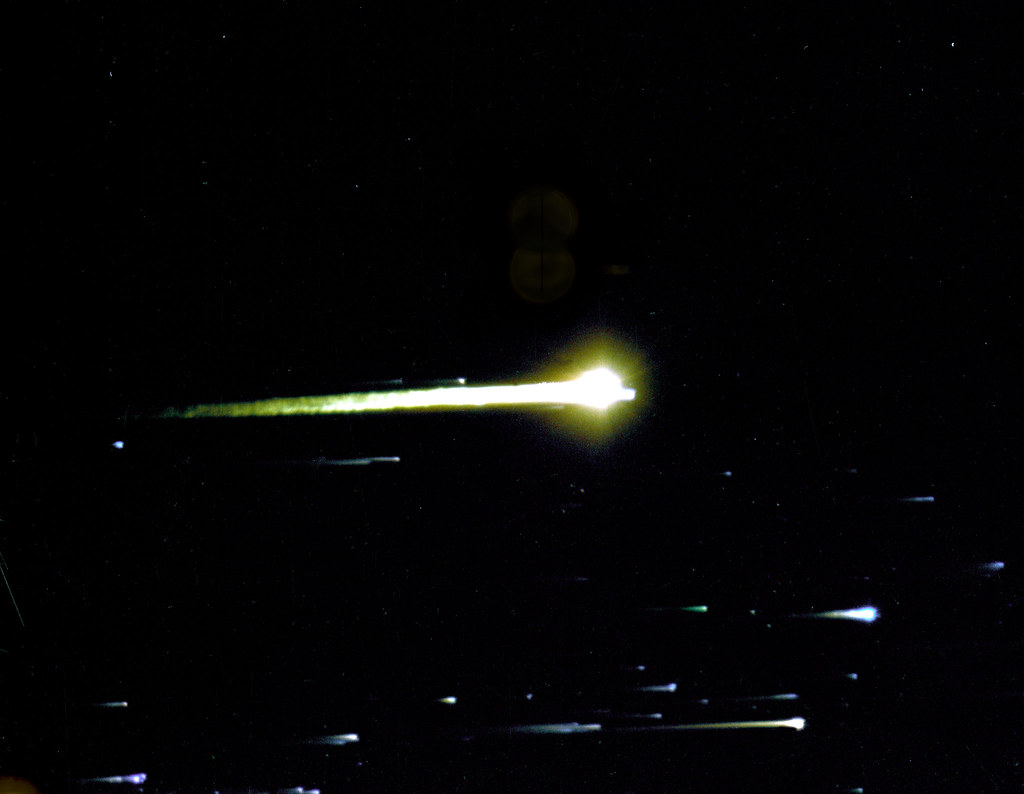
The Apollo 8 crew and equipment performed flawlessly and the crew splashed down on December 27th 1968. Human beings had now journeyed to the Moon; all that remained was to land safely and return. Apollo 8 splashed down safely in the north Pacific Ocean on 27 December of 1968.
